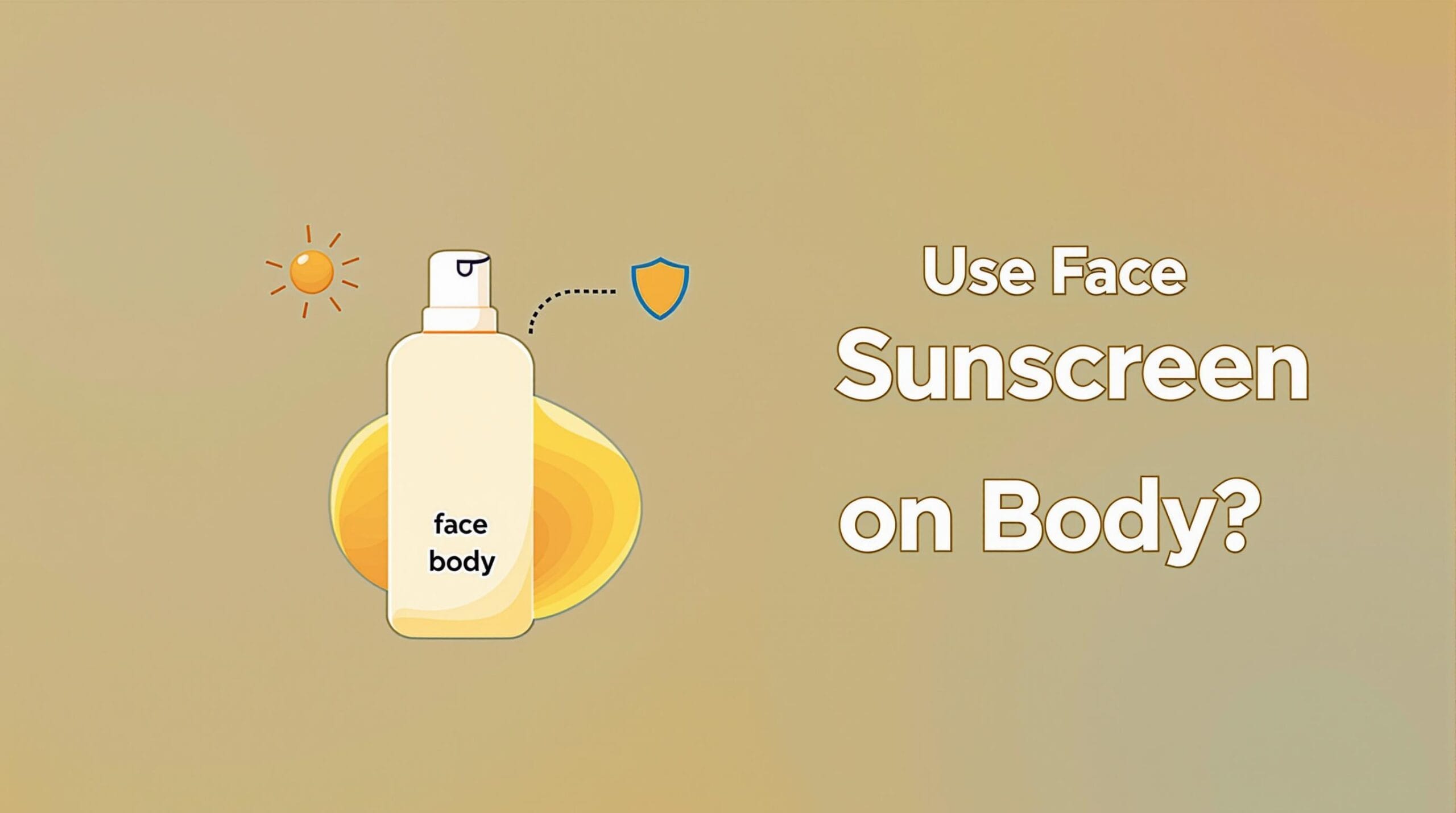
Sun protection is crucial for maintaining healthy skin. Every summer, the question arises: “Can I use face sunscreen on my body?” Understanding sunscreen formulations and their intended uses is key to answering this question effectively. This article will explore the differences between facial and body sunscreens, the potential risks of using them interchangeably, and provide tips for safe sun protection.
Your Skin’s Best Friend: The Role of Sunscreen
Using sunscreen is vital for protecting your skin from harmful UV rays. Exposure to these rays can lead to skin damage, premature aging, and increase skin cancer risks. Broad spectrum sunscreens protect against both UVA and UVB rays. The Sun Protection Factor (SPF) indicates how long sunscreen will protect your skin from UV rays. For effective protection, it is essential to reapply every two hours, especially during outdoor activities. Studies show that proper sun protection reduces the risk of skin damage by up to 95%, reinforcing the importance of making sunscreen a staple in your skincare routine.
Face vs. Body Sunscreen: What’s the Difference?
Facial sunscreens and body sunscreens differ in formulation. Generally, facial sunscreens contain ingredients that cater to sensitive facial skin, while body sunscreens are designed to cover larger areas. The texture also varies—face sunscreens often have lighter formulations for quicker absorption, whereas body sunscreens may be thicker to provide ample protection over larger areas. Understanding these differences will help in choosing the right product for your skincare needs.
Ingredients that Matter: What Sets Them Apart?
The key ingredients in sunscreens are often divided into chemical and physical types. Chemical sunscreens absorb UV rays and convert them into heat, while physical sunscreens contain minerals that reflect and scatter UV radiation. Facial sunscreens may include specialized ingredients like antioxidants that are beneficial for the skin but might cause irritation if used on the body. It is essential to read labels carefully to ensure you are using the right product for each area.
Texture and Finish: Why It Matters!
The texture of the sunscreen plays a significant role in user experience. Facial sunscreens often support a matte finish, ideal for makeup application, while body sunscreens may feel greasier or heavier. A lighter finish may be preferable for the face to prevent clogged pores. Conversely, a thicker body sunscreen could provide longer-lasting protection, especially for outdoor activities. Choosing the right texture can make a substantial difference in comfort and effectiveness.
Can You Really Use Face Sunscreen for Your Body?
Using facial sunscreen on the body can be tempting, especially for the sake of convenience. However, there are certain advantages and disadvantages to consider.
Pros: What’s in it for You?
One major benefit of using facial sunscreen on your body is multi-functionality. If you often travel light, this can save space in your bag. Additionally, if you have sensitive skin or prone to breakouts, using a gentler facial sunscreen may help reduce irritation. For those with oily skin types, a facial sunscreen may provide the right hydration without excess oil, making it a compelling option for summertime use.
Cons: What to Watch Out For
Despite some advantages, there are several drawbacks to consider. Cost efficiency can be a key issue; facial sunscreens tend to be more expensive than body sunscreens. Additionally, facial sunscreens may not provide adequate coverage on larger areas of the body, which decreases their effectiveness. For users with specific skin conditions, it is necessary to understand how their skin might react to alternate formulations.
Tips for Choosing the Perfect Sunscreen for Your Skin
Consider Your Skin Type
Your skin type significantly influences your choice of sunscreen. For oily skin, opt for oil-free formulas. If you have dry skin, look for hydrating ingredients. Sensitive skin types should choose hypoallergenic products, avoiding common irritants.
Check the Bottle: Label Reading Made Easy
When selecting a sunscreen, always read the label. Look for broad-spectrum protections and the SPF level appropriate for your needs. Check for water resistance if you plan on swimming or sweating. Also, ensure the product is not expired, as expired sunscreen loses its effectiveness in protecting your skin.
All About Application: Tips for Ultimate Protection
The 30-Minute Rule
For optimal results, apply sunscreen at least 30 minutes before sun exposure. This timeframe allows the sunscreen to bind effectively to your skin, ensuring full protection. Remember to cover all exposed areas, including ears, neck, and the tops of feet, which are often overlooked.
Reapply Like a Pro!
Reapplication is crucial, especially after swimming or sweating. Reapply every two hours, or more frequently if you’re outdoors or active. Use a timer or reminder on your phone to help maintain consistency in your sun protection routine.
Final Verdict: Face Sunscreen on Body — Yay or Nay?
Using facial sunscreen on your body has its pros and cons. While it offers convenience and is suitable for sensitive skin, potential issues regarding cost and coverage exist. Ultimately, it is essential to choose products designed for the intended use for maximum protection and effectiveness.
Conclusion: Protect Your Skin, No Matter the Type!
Wearing sunscreen is non-negotiable for everyone, regardless of skin type. Understanding the differences between facial and body sunscreens can help you make an informed decision about your sun protection strategy. Always consult a dermatologist for personalized recommendations to suit your skin’s needs. For more information and tips, check out this sunscreens guide!







